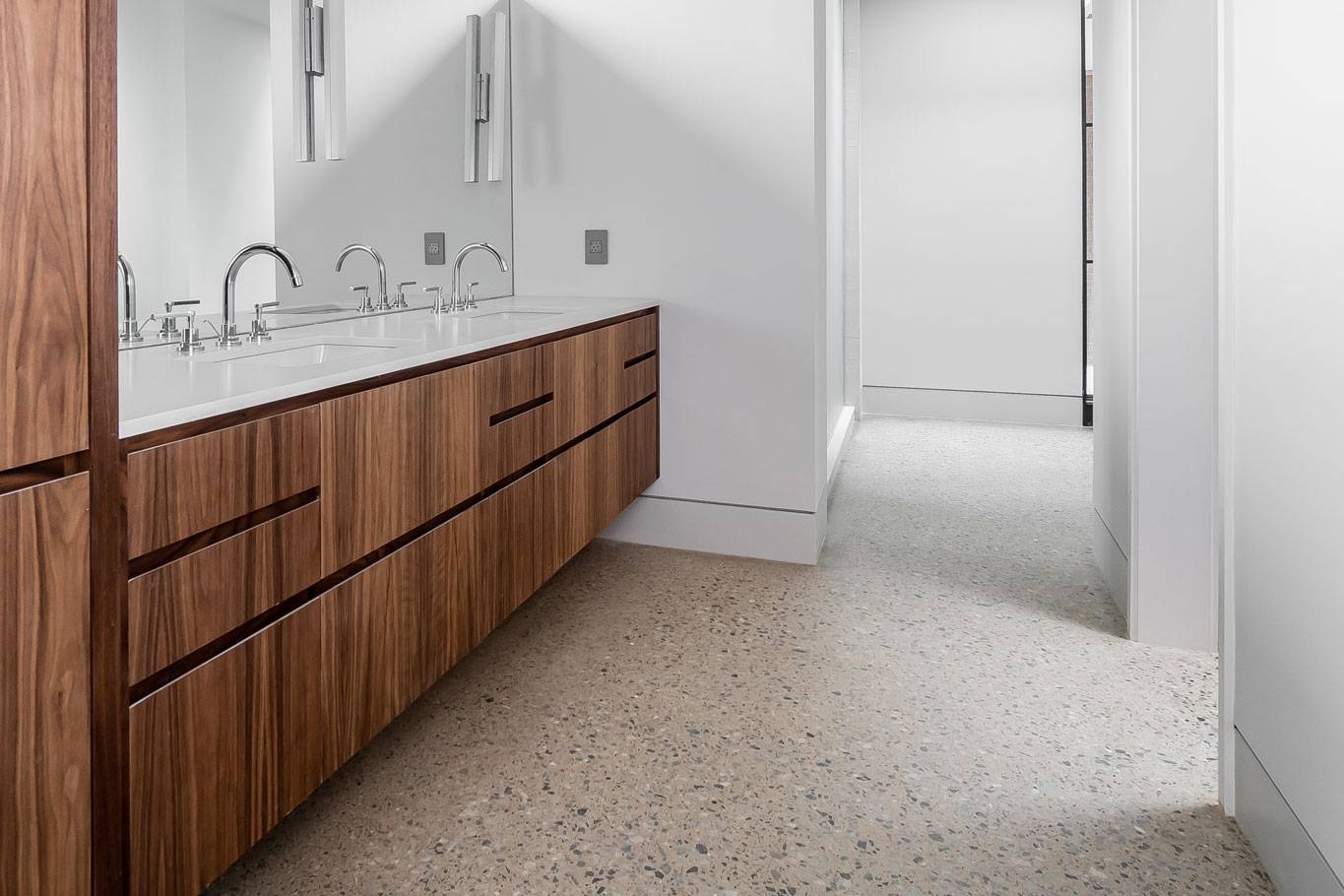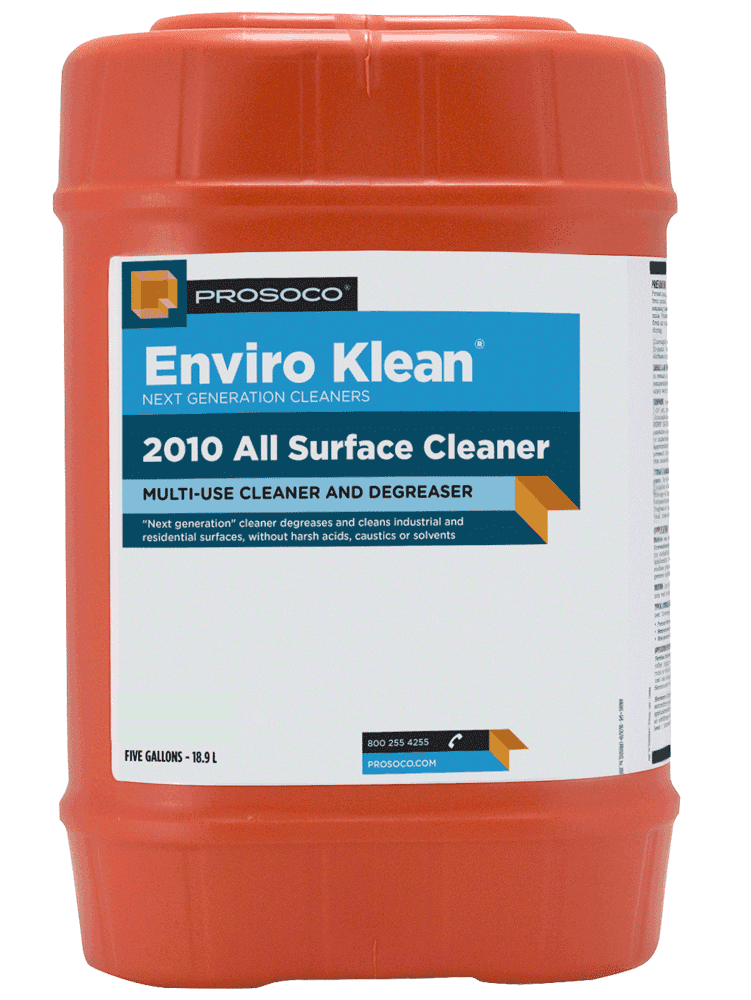Types of Terrazzo Flooring
Terrazzo flooring is a type of resilient flooring system that was first installed in 16th-century Italy. Terrazzo flooring was most likely invented accidentally, as Italian stone workers swept remnants of material onto the clay soil outside of their homes, and foot traffic pushed these marble chips flat into the earth. As terrazzo evolved into a more deliberate flooring system, clay was replaced with cement, and what we think of as modern terrazzo was born. In the 20th century, cement was largely replaced with epoxy resin as a binder due to the many functional benefits of epoxy over cement.
Epoxy Based Systems
Epoxy-based ‘thin-set’ terrazzo flooring systems may be installed as thin as 1/4″ over suitable subfloors. The primary benefit of epoxy systems is that epoxy has essentially no porosity and therefore is not susceptible to staining from liquid spills. As such, epoxy terrazzo flooring systems have a very low maintenance profile. Basic maintenance includes dust mopping or sweeping, wet mopping, and if wax is used in the installation, occasionally stripping and rewaxing the floor.
Because epoxy flooring systems are not porous, a sealer such as wax is not required. However, wax is often implemented on these systems to increase the depth of color of the aggregates in the floor. Non-waxed (polished terrazzo floors) require less maintenance than waxed floors but may have a more muted appearance than waxed terrazzo floors.
Cement Based Systems
Cement-based terrazzo flooring systems are more faithful to the terrazzo flooring systems of 16th-century Italy but have some serious drawbacks for most modern installations. The primary disadvantage is the thickness required for a durable installation. Most Portland cement-based terrazzo flooring systems are over 2″ thick versus an average of 1/2″ for epoxy-based systems. Further, cement-based flooring systems are prone to staining from liquid spills because cement is porous by nature.
Cement-based terrazzo flooring systems must be sealed with a topical sealer to reduce the risk of staining and premature wear. This requirement means a frequent maintenance interval of stripping and resealing the floors, leading to increased long-term maintenance costs.
About Craftsman Concrete Floors
At Craftsman Concrete Floors, we’ve been installing decorative concrete floors in Texas since 1999. We offer a wide range of services for residential and commercial projects. If you’re working on a project that specifies terrazzo floors, call us for a free consultation.

A terrazzo floor installed in a modern residential bathroom.
Terrazzo Floor Cleaning Basics
Terrazzo floor systems are incredibly durable, but proper maintenance is still required.
Terrazzo Floor Cleaners
Always use a pH-neutral cleaner designed for hard surface floor cleaning. Cleaners that are acidic or alkaline can dull terrazzo floors and speed wear. All cleaners must be clean rinsing, as a buildup of cleaner residue can create a dangerously slippery condition on your floor.
Dust Mop, or Vacuum Your Floors Often
Dust is abrasive on terrazzo floors and can speed wear in high-traffic areas. Keeping your floors clean will extend their life and reduce long-term maintenance costs.
Promptly Clean Liquid Spills
While modern epoxy terrazzo binder is highly stain resistant, the marble chips in the floor remain slightly porous. Liquid spills allowed to dry on the floor can stain the aggregates, requiring costly repair. Further, liquid spills may discolor floor wax or other topical sealers on terrazzo floors.
Don’t Over-Wax Terrazzo Floors
Topical floor wax is required for some types of terrazzo flooring systems, however, the over use of wax will trap contaminants in the floor surface and make floors excessively slick. Using a penetrating sealer is always preferable to a topical one. When in doubt, get a consultation from a local terrazzo contractor.
Terrazzo Floor Maintenance Schedule
Daily Maintenance
- Dust mop, or sweep terrazzo floors daily. Keeping hard flooring systems free of contaminants is essential to reduce premature wear and keep floors from becoming slippery.
- Use Robot vacuums designed for hard surfaces for residential or small commercial installations.
Weekly Maintenance
- Wet mop terrazzo floors using a dilute cleaning solution intended for terrazzo flooring systems.
- Use auto scrubbers with an attached white pad may be used for larger cleaning jobs.
- Always use a cleaning solution that fully rinses from the floor. Build up of cleaning products can make terrazzo floors slippery.
Biannual Maintenance
- Terrazzo floor sealer should be inspected twice yearly for signs of wear. If the sealer is worn, it should be stripped and reinstalled with a specialized terrazzo flooring system.
- If your terrazzo floor looks different from when it was initially installed, contact us for a free onsite consultation. Delaying maintenance can cause the floor to require costly terrazzo floor restoration.

A terrazzo floor during an extensive restoration project. New areas of terrazzo were poured where cabinets and walls were previously installed.
What’s The Best Cleaner for Terrazzo Floors?
For cleaning terrazzo floors, we recommend Prosoco 2010 all-purpose floor cleaner. This dilutable floor cleaner is suitable for terrazzo, polished concrete, and natural stone floors.

Locations We Service
Texas
Dallas, Austin, Houston, McKinney, Waco, San Antonio, El Paso, Fort Worth, Arlington, Corpus Christi, Plano, and Lubbock.
Colorado
Centennial, Colorado Springs, Aurora, Arvada, Boulder, Denver, Fort Collins, Lakewood, Highlands Ranch, Greeley, Longmont, Pueblo, Thornton, Westminster.

